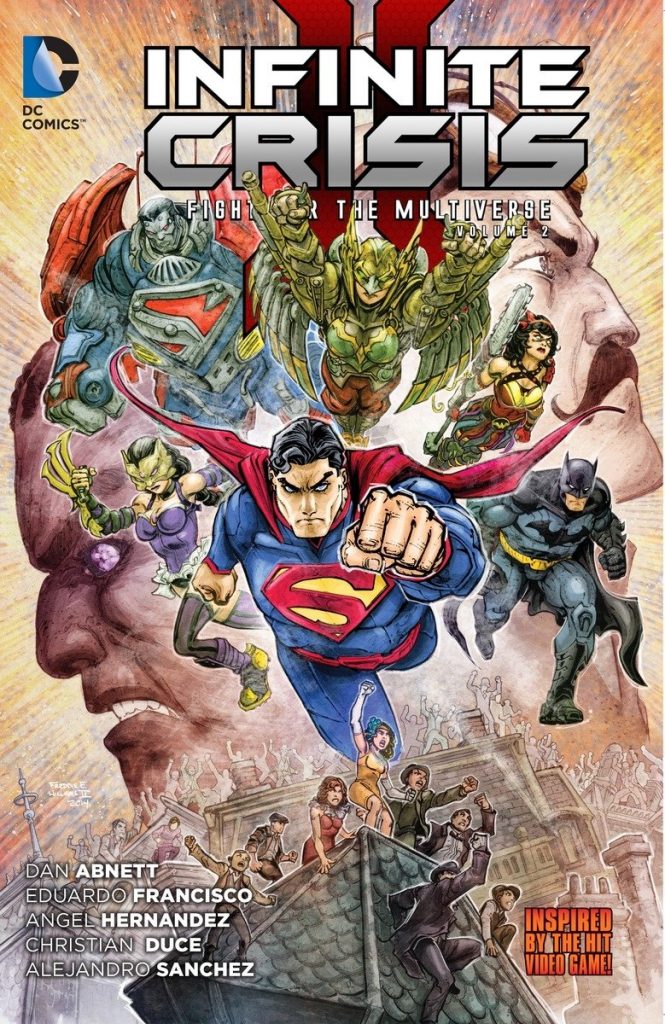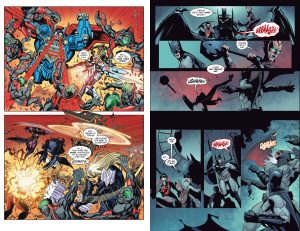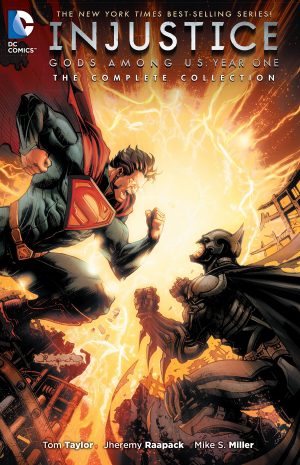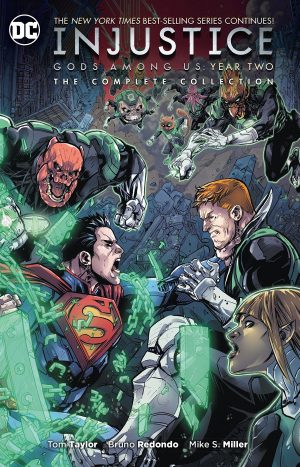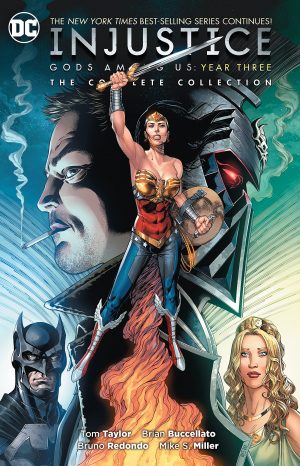Review by Ian Keogh
Batman of the mainstream universe has been told his world is but one of 52, and all 52 are under threat from a malign presence. The intention had been to gather a finely selected combination of heroes able to work together in order to end the threat, these chosen by the Monitor operating from Nil, a place beyond the 52 worlds. As Dan Abnett showed in Volume 1, the reality was only a few of the chosen uniting, while the others who’ve signed up are more random. Some are different versions of well known names, while Cyborg, Flash and Zatanna followed Batman from Earth.
Continuing the process begun over the first half of Infinite Crisis: Fight for the Multiverse, Abnett shows the heroes and villains of various Earths, some more advanced than Batman’s home world, some less, and some appalling, in particular one nightmare Earth alternative. To start with, the likes of Doctor Fate and Power Girl may wear different costumes, but Green Arrow’s gender change apart, they’re essentially the same characters we know. That doesn’t apply to the more heavily featured Catwoman, Robin and Wonder Woman, nor to other surprises that follow.
Fewer artists are used than last time, and the star turn is Szymon Kudranski’s elegantly designed pages, of which there are all to few. The overall artistic standard is more accurately represented by the crowded sample page from Eduardo Francisco and the more appealing jagged work of Angel Hernandez, with Christian Duce also shining. Abnett’s prone to use up pages on battles rather than mysteries, but this is a superhero graphic novel and it’s more noticeable because some of these sequences aren’t drawn as well they might be. Beyond that, because the art is better and more consistent than the first volume, it brings out the twists of Abnett’s plot.
Heroes and villains are switched between worlds, each time facing impossible odds, and gradually putting together the bigger picture. The most interesting aspect, though, is the moral ambivalence. Just because Lex Luthor is from another earth, in this case the one seen in Gotham By Gaslight, is he automatically as evil as the known Luthor? It’s clear there’s a guiding malevolent force with an agenda, but is it Luthor? Can he be trusted?
Unfortunately once those questions are answered we’re left with rather a damp squib for the final chapter, which plays out events without any further surprises and so predictably. Perhaps the first volume’s ordinary art sapped Abnett’s enthusiasm, but on other projects he’s been far more creative.
